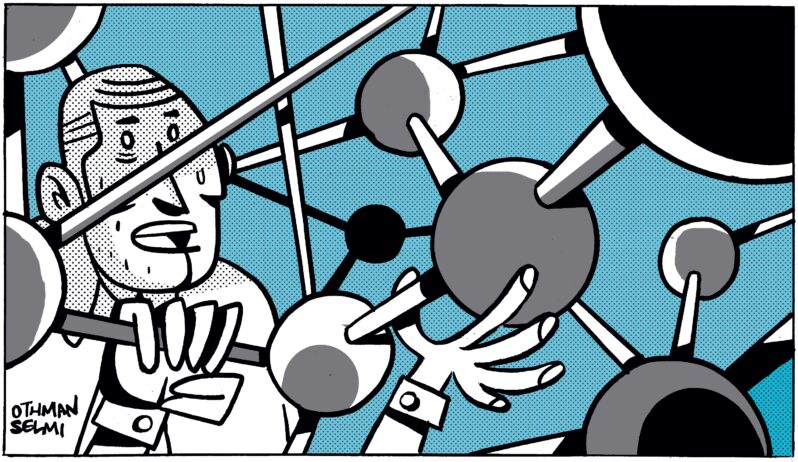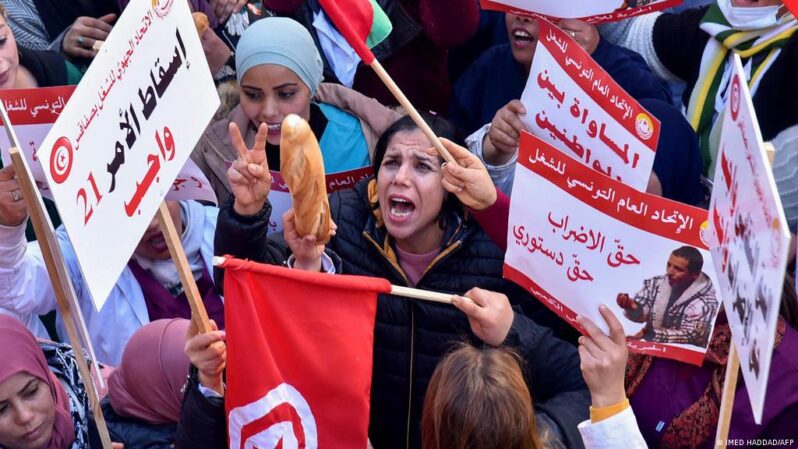Municipal Council Dissolution in Tunisia: Fears and Flaws

At the time of writing this article, 37 of the 350 municipal councils elected in Tunisia in 2018 – i.e. more than 10% – have been dissolved. This number of dissolutions over a short period refutes the narrative that they are isolated cases and a healthy part of local politics. Since May 2019, the Independent High Authority for Elections has organized 30 by-elections. Elections in seven other municipalities have been postponed for several reasons, including the country’s deteriorating health situation (as in Kalaa Kebira, Azmour, Tabarka, Sakiet Ezzit,[1] and Chihia[2]) and suspensions of the electoral process pending final court rulings (as in Menzel Bouzaiane[3] and Faouar).
When legislators enshrined the exceptional mechanism of municipal council dissolution via simultaneous resignation by the majority of members, they were probably unaware that it would be used frequently from the first months following the 2018 municipal elections. At that time, many people – especially in the political authority – considered these cases a healthy phenomenon reflecting commendable dynamism and an actual exercise of local democracy. Others interpreted them as a sign of instability in the nascent local councils and the inability of their diverse members to coexist. As we enter the final year of the municipal councils’ term, we must examine the causes – both legal and practical – of this phenomenon, as well as its effects on by-elections that voters and candidates sit out and the new councils’ gender composition. This investigation is particularly important as the municipalities are now under pressure from President Kais Saied’s hostile political discourse.
Municipal Council Dissolutions: An Escalating Phenomenon Revealing a Legal Flaw
The municipal council dissolution mechanism, which allows an absolute majority of council members to force a by-election by simultaneously submitting their resignations, appeared in the very first draft of the Local Authorities Code. The mechanism is based on the simple idea that if a municipal or regional council’s members cannot find ways to work together, an absolute majority unsatisfied with the situation can call repeat elections by collectively or simultaneously resigning. In other words, this mechanism depends on the free will of the majority of the council’s members, unlike the mechanism of dissolution by government order,[4] which requires complex procedures.[5] From this standpoint, the dissolution-by-resignation mechanism does not in and of itself pose an issue. However, its transformation into a phenomenon afflicting dozens of municipalities makes examining its causes an imperative.
In reality, the vast majority – more than 80% –- of these dissolutions occurred because of tension between the majority of members and the council’s head due to the latter’s unilateralism and noncommunication. The many examples include the municipalities of Elel-Mourouj, Sbikha, Menzel Kamel, Menzel Horr, Sakiet Eddaier, Kondar, and Elel-Marja. The municipal head is elected not directly by the populace but by the municipal council after its instatement. Before resorting to simultaneous resignation, many of the councils attempted to withdraw confidence from the municipal head. These attempts were fruitless because withdrawing confidence requires a supermajority of three quarters of the members, whereas resignation of 50% plus one is enough to dissolve the council and trigger by-elections. In other words, Tunisian legislators fortified the municipal president by requiring a three quarters majority for a vote of no-confidence compared to a simple majority for dissolution of the entire council. Since the first signs of municipal council dissolutions appeared in 2018, this legislative choice has stirred constant debate. It tips the scales in favor of the municipal head (and regional head once regional councils are established) while local democracy is supposed to be a deliberative system in which power instead belongs to the council. From another angle, the choice of a supermajority for withdrawing confidence raises several questions, especially as it does not terminate the head’s membership; rather, the head is dismissed from their functions and remains a council member.
While the mechanism of dissolution by collective or simultaneous resignation of the majority of members was adopted in the earliest versions of the Local Authorities Code bill,[6] the mechanism of withdrawing confidence from the municipal head via a three-quarters majority was added later during the discussions in the Organization of Administration and Armed Forces Affairs Committee.
The inclusion of the no-confidence mechanism traces back to the aforementioned committee’s rapporteur, Basma Jebali, who proposed adding an article providing for an “explained motion, signed by at least one third of the municipal council’s members, to withdraw confidence from the council’s head via a two-thirds majority”. However, the proposal did not appeal to the committee’s president, Mohamed Ennaceur Jbira, who argued that “the no-confidence mechanism is a tool for destabilizing the municipal councils and sows discord among the members”. Democratic Bloc MP Mabrouk Hrizi argued that “this mechanism is a good solution to the problems surrounding dissolution and suspension, but it must not turn into a cause of instability in the local councils, and therefore it should be rationalized”. Popular Front MP Jilani Hammami argued that “the most democratic systems allow voters, when necessary, to remove an elected figure if he does not live up to their confidence”. He added that “it makes no sense for us to give the central authority the right to relieve the local council head while not giving that right to the local council that elected him”.
In response to the interventions, MP Monia Ibrahim suggested increasing the number of signatures required on the motion from one third to one half and adding a paragraph that prohibits using this measure more than once per term or during the first six months of the term. Subsequently, Mokhtar Hammami, representing the government, proposed “strengthening the safeguards such that the initiative must come from half the members and the approval from three quarters”. This was the phrasing approved by a majority of those present.[7]
In light of this debate, the supermajority for withdrawing confidence from the municipal head was enshrined. The Consensuses Committee’s debates over the added article only addressed the inability to challenge a non-confidence decision because of its political – rather than administrative – nature and whether the mechanism should only be available when the municipal or regional head has committed a serious error.
By-Elections: Absent Candidates and Minimal Turnout
Undeniably, the municipal elections are less exciting than presidential and legislative elections. In May 2018, the turnout in municipal elections was a mere 34%. During the by-elections held in 30 municipalities, turnouts of 34% to 58% between 2019 to 2020 have been replaced by record lows – such as 2.3% in Hammam Sousse, 5% in Menzel Horr, and 7% in El Mourouj – in 2021.
Decentralization is based on the philosophy of bringing services and local decision-making closer to the citizens and effecting immediate and direct change on their lives. Since the 2018 elections, these stakes, however, have not been reflected in municipal election turnouts. This may be due to the domination of the center in the psyche of the Tunisian voters, who always see national elections as the main event and participate in them to strong – albeit varying – degrees. The low turnout since 2018 may also be due to poor understanding of the function of municipalities enshrined in the Local Authorities Code and a failure to demystify decentralization in the minds of voters.
In most democracies, turnout in by-elections, whether local or legislative, is low as the stakes are low. While turnout in Tunisian by-elections has conformed to this norm, especially because of the dominance of the anti-municipalities discourse and the municipalities’ inability to meet the demands of local affairs, the puzzling factor is candidates’ reluctance to run in these elections.
In several cases, the Independent High Authority for Elections had to extend the deadline for submitting candidatures because of a lack (Menzel Horr and Hammam Sousse) or absence (Tabarka) of candidates. Undoubtedly, the political choice available to voters during by-elections held recently has been much more limited than in past years. The most revealing factor is the large retreat of the parties from participation. The elections of seven of the 37 dissolved municipal councils were swept by independents when the parties sat out entirely. As for the other municipalities, Ennahda topped the list of party engagement by participating in 26 elections, followed by the People’s Movement with participation in 11, and then the Democratic Current with participation in five.
Although some parties have insisted on maintaining a foothold in the municipalities via the by-elections, most candidates are independents, so the victory of independents is unsurprising.
There are three reasons for the low turnout and lack of candidates in the by-elections. The first is voters’ dissatisfaction with the municipalities’ performance, especially the inability of some to meet local expectations because of the absence of human and financial resources and of a political environment supportive of the decentralization process. The second is the lack of political choice, especially because of the anti-municipalities, anti-decentralization discourse and because not much of the municipalities’ term remains (the next elections will theoretically be in mid-2023). Finally, the reluctance can be attributed to fear of the financial penalties enshrined in the electoral law, specifically Article 98. This article imposes fines equal to 10 times the maximum public aid in the electorate concerned for failing to deposit a financial statement (fines that the Court of Audit has provisionally leveled on 106 of the 138 lists that neglected this obligation), in addition to the possibility of removing council membership.
Councils Headed by Women Face Compounded Risk of Dissolution
Enshrining horizontal and vertical parity in municipal elections was considered an important step toward strengthening women’s presence in local decision-making positions. This stipulation ensured decent representation in municipal councils, with women constituting 47% of all members. However, this percentage did not extend to the municipalities’ presidencies, with women only taking 19.5% of these positions during the 2018 elections. The rate has begun to fall because of individual resignations of women heads and because of the by-elections, which have brought it down to 15% even when the individual resignations are not taken into account. The electoral law requires that the municipal head be elected from among the heads of the electoral lists. Hence, women’s assumption of the presidencies of one fifth of the municipalities may have been because the parties were forced to nominate women to head half their lists – a condition absent from by-elections.
Resignations are not the only common denominator among the dissolved municipal councils. Municipal councils headed by women are approximately three times as likely to be dissolved through simultaneous resignation by a majority of members as councils headed by men. Women headed 40% of the dissolved councils, whereas they only headed 19.5% of all councils following the 2018 elections, as previously mentioned. This concern is exacerbated by the results of the by-elections in 15 municipalities whose councils were headed by women: women were re-elected to the same position in just two.
Overall, horizontal and vertical parity, while achieving relatively positive results in terms of the local councils’ composition, produced limited results in terms of granting women municipal presidencies in the 2018 elections. Parity was then significantly undermined by the by-elections, which – because of the limited geographical scope – are not subject to the horizontal parity obligation.
The faltering of the decentralization process, including the municipal council dissolutions, cannot be interpreted in isolation of the broken legal and institutional framework, on one hand, and the lack of a supportive political environment, on the other. Today, there is a pressing need to evaluate the process objectively and mend its gaps, whether by working to achieve its objectives under the best circumstances or by saving it from annihilation by an ill-defined project that claims to restore the people’s bottom-up power.
This article is an edited translation from Arabic.
[1] Independent High Authority for Elections statement on 13 January 2022.
[2] Independent High Authority for Elections statement on 14 January 2022.
[3] Independent High Authority for Elections statement on 10 December 2020.
[4] Article 204 from the Local Authorities Code.
[5] Elected councils can, if other solutions cannot be found, be dissolved via an explained government order after the High Council for Local Authorities is consulted, based on the opinion of the High Administrative Court, on grounds of a grave breach of the law or clear obstruction of the populace’s interests, and after its members are interviewed and allowed to defend themselves.
[6] Article 194 of the version presented to the Organization of Administration and Armed Forces Affairs Committee.
[7] See the pamphlet issued by Marsad Majles – Al Bawsala on 22 February 2018.



